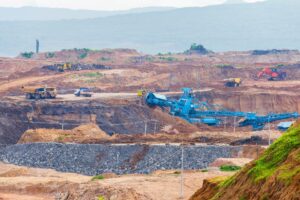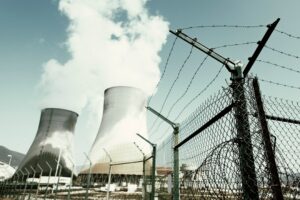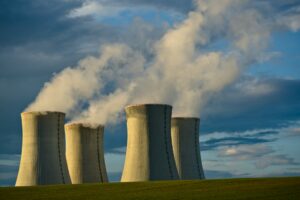The quest for clean and sustainable energy sources is rapidly gaining momentum, with nuclear power playing a critical role in addressing global energy demands and reducing greenhouse gas emissions. As the need for nuclear energy grows, so too does the importance of environmentally responsible uranium mining. In this context, in-situ recovery (ISR) technology has emerged as a game-changing solution that is revolutionizing the uranium extraction process by offering a more sustainable and eco-friendly alternative to conventional mining methods.
In this in-depth article, we will explore the fundamental aspects of ISR technology, examining its principles, advantages, and applications within the uranium mining industry. With insights from industry leaders like William Sheriff and enCore Uranium, we will delve into how ISR is transforming uranium extraction, significantly reducing its environmental impact, and fostering the sustainable development of domestic nuclear energy resources.
Discover how ISR technology is shaping the future of uranium mining with minimal surface disturbance, reduced water consumption, and enhanced safety measures, all contributing to a greener, more sustainable uranium supply chain. By understanding the importance and potential of ISR technology in uranium mining, we can better appreciate its contribution to the clean and domestic nuclear energy landscape.
Join us on this informative journey as we unlock the true potential of in-situ recovery technology and how it is helping industry leaders like enCore Uranium usher in a new era of sustainable uranium mining practices that will drive the clean energy revolution forward.
1. The In-Situ Recovery Process: How Does It Work?
In-situ recovery (ISR) is an innovative extraction method that involves the dissolution of uranium directly from underground ore bodies, without the need for surface excavation or the earth’s physical disruption. Here’s a step-by-step breakdown of the ISR process:
Preparation and Exploration: The ISR process begins with comprehensive geological surveys and tests to identify suitable ore bodies possessing high uranium concentrations. This step ensures the deposit’s mineral content can be effectively and economically extracted using ISR technology.
Drilling and Installation of Wells: Once a suitable deposit is identified, a series of injection and production wells are strategically drilled around the ore body. The injection wells are used to convey a leaching solution, typically containing oxygen and bicarbonate, into the underground uranium deposit.
Uranium Leaching: The injected solution dissolves the uranium in the underground ore, creating a uranium-rich liquid that can then be pumped back to the surface through the production wells.
Uranium Recovery and Processing: The uranium-loaded solution is transported to a processing plant, where it undergoes purification and concentration processes, ultimately producing uranium in the form of yellowcake. The remaining liquid, now depleted of uranium, is re-injected into the ground through the injection wells to continue the extraction process.
Throughout the ISR process, continuous monitoring and quality control measures are in place to ensure the safe and efficient extraction of uranium and adherence to environmental guidelines.
2. Environmental Advantages of In-Situ Recovery Technology
Compared to conventional uranium mining methods such as open-pit mining and underground mining, ISR technology offers a range of tangible environmental benefits:
Reduced Surface Disturbance: ISR eliminates the need for large-scale surface excavation, considerably reducing the overall physical footprint of the mining operation. This limits habitat disruption and the associated environmental damage.
Lower Water Consumption: The ISR process often consumes substantially less water than conventional mining methods. Additionally, the closed-loop nature of many ISR systems allows for the sustainable reuse of the injected solution, helping to minimize water consumption further.
Decreased Waste Generation: In-situ recovery generates significantly less solid waste than traditional mining methods. As the ore body remains largely undisturbed underground, waste rock and tailings piles, commonly associated with conventional mining, are avoided. This reduces long-term waste management challenges and associated environmental risks.
Lower Greenhouse Gas Emissions: By minimizing the need for energy-intensive excavation and ore transport, ISR operations generate lower greenhouse gas emissions compared to conventional uranium mining.
3. Economic Benefits and Feasibility of In-Situ Recovery
In addition to its favorable environmental profile, in-situ recovery also offers several economic benefits:
Lower Capital and Operating Costs: Compared to conventional mining, ISR technology often requires less capital investment and subsequently lower operating costs. This is attributed to the reduced need for extensive surface infrastructure, extraction and ore processing equipment, and waste management facilities.
Shorter Development Timeline: ISR projects are typically faster to develop and commission than conventional uranium mines due to streamlined regulatory approvals and fewer construction requirements. This can enhance project feasibility and return on investment for mining companies.
Scalability and Flexibility: ISR technology can be effectively scaled to suit various deposit sizes and ore concentrations, from smaller, localized uranium deposits to larger, more widespread formations. The modular nature of ISR systems enables mining operations to be optimized and adapt to changing conditions.
4. Challenges and Considerations in Implementing ISR Technology
While ISR technology presents significant advantages, it is also essential to recognize the associated challenges and considerations:
Geological Requirements: ISR technology is highly dependent on favorable geological conditions, such as porous and permeable rock formations, groundwater flow control, and the deposit’s mineral composition. ISR may not be suitable for all uranium deposits due to these specific requirements.
Regulation and Licensing: ISR operations must adhere to strict regulatory frameworks and licensing processes to ensure safety, environmental protection, and stakeholder engagement.
Public Perception: ISR technology, like all uranium extraction methods, must contend with public perceptions and concerns regarding environmental impact, health risks, and the potential exploitation of natural resources.
The Promise of In-Situ Recovery for Sustainable Uranium Mining
In-situ recovery technology has the potential to revolutionize the uranium mining industry by offering a more environmentally responsible and economically viable alternative to conventional extraction methods. Pioneering companies like enCore Uranium, led by William Sheriff, are at the forefront of ISR technology development and deployment, paving the way for a cleaner, more sustainable uranium mining practices that support the growing demand for domestic nuclear energy. By embracing ISR technology, we are one step closer to unlocking a greener energy future for our planet.





